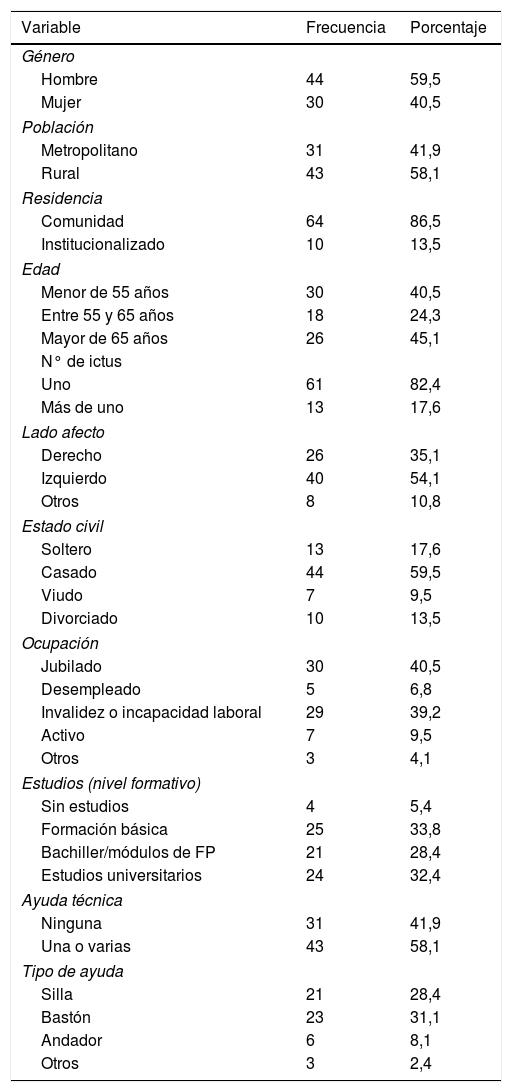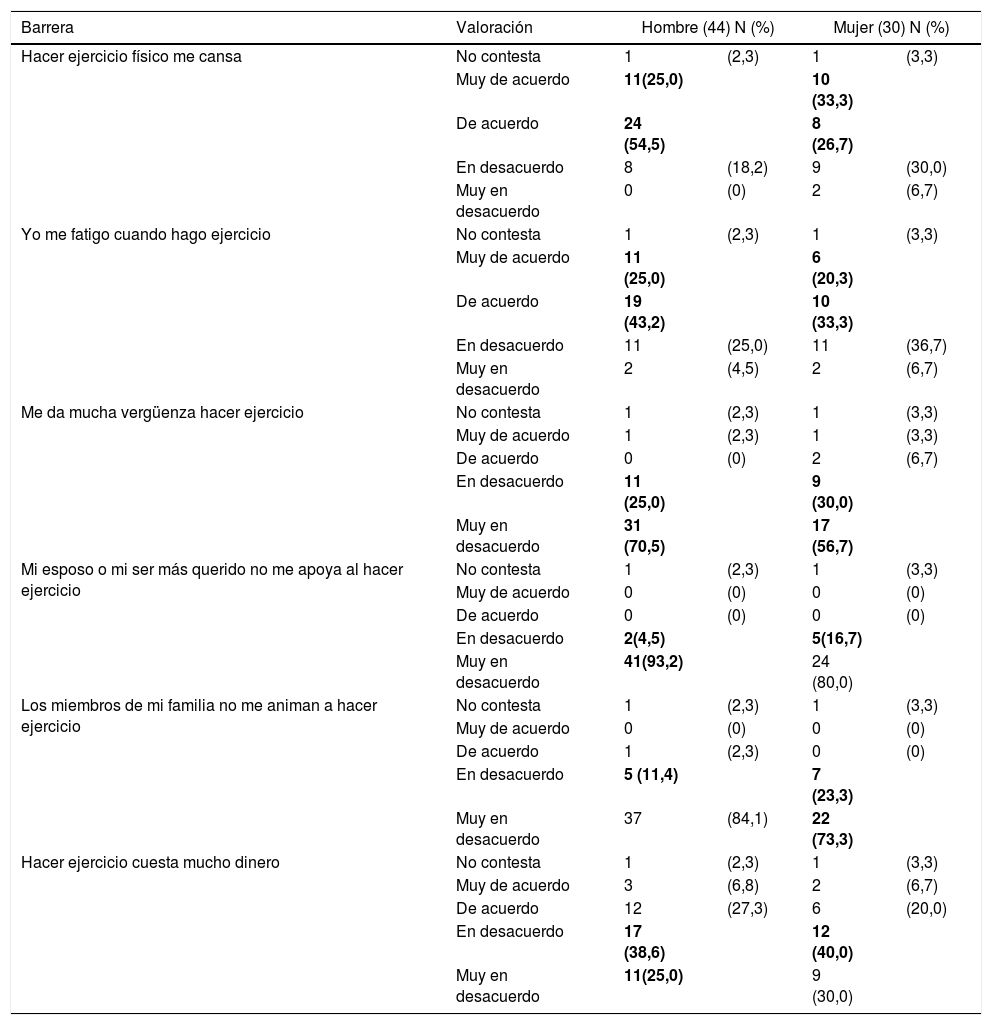La actividad física (AF) es fundamental para la salud. Las secuelas producidas tras un ictus y otras barreras pueden interferir en la realización de ejercicio físico (EF). Consecuentemente, podría variar la percepción de sus beneficios. El objetivo de este estudio fue determinar el nivel de AF en función de la capacidad de deambulación, y el grado de incapacidad que presentan los individuos con dichos caracteres, así como las barreras y los beneficios en la práctica de EF percibidos por estos.
Material y métodosSe realizó un estudio transversal de encuesta en una muestra de personas con secuelas crónicas tras ictus. Se elaboró una encuesta que contó con un diario de actividad, la escala SIS-16, el cuestionario IPAQ-E, y las escalas FAC y EBBS.
ResultadosParticiparon 74 personas (edad media de 59,19±15,4 años). El 51,4% mostraron una AF baja; particularmente las mujeres (56,7%), los mayores de 65 años (76,9%), los que vivían institucionalizados (100%) y los residentes en el ámbito rural (69,2%). Aquellos individuos con un bajo grado de incapacidad destacaron dentro de los niveles de AF moderada (Mdn=76) y alta (Mdn=87,5), mientras que las personas con un mayor grado de incapacidad despuntaron dentro del nivel de AF bajo (Mdn=51). Hubo diferencias significativas entre el grupo de marcha totalmente dependiente (Mdn=0) y el grupo de marcha independiente (Mdn=1110,500)U=108,500; p<0,001), siendo el primero de los grupos el que obtuvo un nivel bajo de AF. Las barreras más comunes fueron las relacionadas con la fatiga y el cansancio que provoca el EF. Los participantes reconocieron los beneficios del EF para el incremento de la fuerza y el tono muscular; la mejora de la flexibilidad; el funcionamiento del corazón y la condición física. No se encontraron diferencias significativas en cuanto a la percepción de barreras y beneficios.
ConclusiónLa mayoría de los participantes presenta una AF baja, predominando esta en aquellos con un mayor grado de incapacidad y con una marcha dependiente.
Se reconocen los beneficios del EF para la mejora de su sistema cardiovascular, su fuerza muscular y su condición física. Justifican la falta de EF por la fatiga y el cansancio que provoca.
Physical activity (PA) is fundamental for health. The sequelae produced after a stroke and other barriers can interfere in the performance of physical exercise (PE). Consequently, the perception of its benefits may vary. The aim of this study was to determine the level of PA according to the ability to walk, and the degree of disability that individuals with these characteristics present, as well as the barriers and benefits to PE practice perceived by them.
Material and methodsA cross-sectional survey study was conducted in a sample of people with chronic squeal after stroke. The survey included a daily activity diary, the SIS-16 scale, the IPAQ-E questionnaire, and the FAC and EBBS scales.
Results74 people participated (mean age 59.19 ±15.4). Of these, 51.4% showed a low PA; particularly the women (56.7%), those over 65 years (76.9%), those who were institutionalized (100%), and residents in rural areas (69.2%). The individuals with a low degree of disability stood out within the levels of moderate PA (Mdn=76) and high PA (Mdn=87.5), while those with a higher degree of disability stood out within the level of low PA (Mdn=51). There were significant differences between the totally dependent walking group (Mdn=0) and the independent walking group (Mdn=1110.500) (U=108.500, p<.001), the first of the groups obtained a low level of PA. The most common barriers were those related to fatigue caused by PE. Participants recognized the benefits of PA for increasing strength and muscle tone; the improvement of flexibility; the functioning of the heart and physical condition. No significant differences were found regarding the perception of barriers and benefits.
ConclusionThe majority of participants present a low PA, predominantly those with a higher degree of disability and with dependent walking.
The benefits of PE are recognized for improving cardiovascular health, muscle strength and physical condition. They justify their lack of PE by the fatigue it causes.
Article
Si ya tiene sus datos de acceso, clique aquí.
Si olvidó su clave de acceso puede recuperarla clicando aquí y seleccionando la opción "He olvidado mi contraseña".












